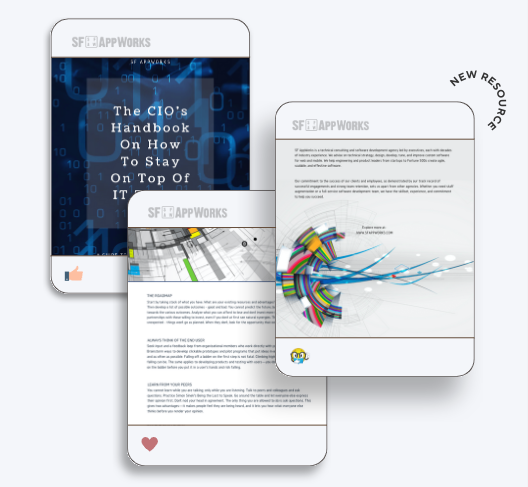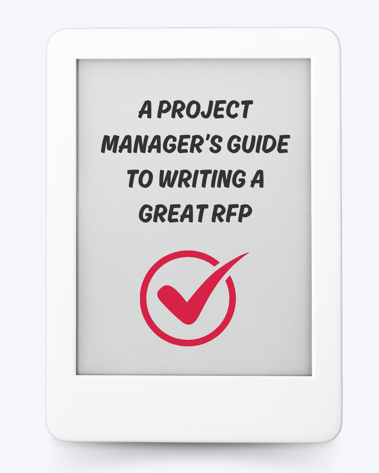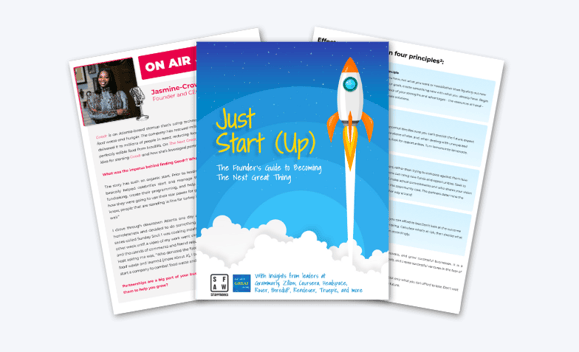Along our innovation exploration, we’re always noting the patterns, insights, and practices that can help us best support our clients in developing their products and services. Innovative solutions are more than just technologically cutting edge—they are human-centered and highly impactful in the industries they represent.
A core capability for any organization looking to achieve sustainable growth is effective measuring and tracking of progress. But how do you measure innovation? When we spoke with Scott Kirsner of Innovation Leader, he commented on an important metric he’s seen large corporations use during his career: the new product vitality index.
Related: Organizational Models for Managing Product Innovation
What is the New Product Vitality Index?
The Product Vitality Index is a metric that was created in 1988 to determine a company’s innovativeness through its ability to consistently deliver new products or services. First used by leading research and development company, 3M, the index measures how much of an entity’s revenue is generated by its newest products. The simple idea is: the more revenue generated by new products (as opposed to pre-existing), the more innovative the organization.
How is it calculated?
The NPVI calculates what percentage of the total revenue generated by a company is coming from new products (products that have been around for 'N' amount of time).
NPVI = New Product Revenues/ Gross Revenues
Using this approach, the flexible variable (not represented in equation) to pay attention to is N, which is amount of time that a product is considered new, begging the question: for what amount of time can a product be considered new?
The answer varies depending on a number of factors including the nature of the product, the industry it exists in, and more—but it generally ranges from a number of months to years. If the product has a longer development cycle (like a piece of machinery), N will likely equal a number of years. In the case of digital products and services, N can be as short as a couple months.
For reference: 30% would be considered a high percentage for B2B companies...correlated with a healthy innovation practice.
According to GGI, ‘vitality’ is synonymous with ‘effectiveness’ with no denominator––meaning that effectiveness can be determined by profit, or whatever else a company determines to be important. That being said, revenue tends to be the most popular measure of efficacy in research and development.
Get a free copy of 'How To Measure Innovation of Digital Products'
%20(1).png?width=479&height=340&name=innovation%20metrics%20resource%20image%20(1)%20(1).png)
The Benefits of Creating a Vitality Index
1. Simplicity and Traceability
The vitality index creates simplicity in measuring innovation revenue with respect to the broader revenues of a company. It takes innovative activities out of the vague, mystical space and brings them into concrete numerical form where they can be analyzed, projected, and improved upon.
2. Target Identification; Business Alignment
Establishing a vitality index can help a business align with the markets it serves and better understand the endeavors necessary for maintaining its relevance within that space. Companies that don’t invest in innovation run the risk of stagnation over time.
3. Objective Clarification
This metric is effective at getting organizations on the same page in terms of company objectives and plans to achieve those objectives. In order to stay competitive in a market, teams should be aligned around decisions involving advancing or killing a project (and why). PVIs help provide clarity of goals by measuring existing and potential revenue.
Learn More About Innovation in Tech by Listening to This Episode of Our Podcast: The Next Great Thing
Maintaining Corporate Vitality in 5 Steps:
Vitality is a measure of effectiveness. The aim here is to develop processes that achieve consistency in that effectiveness. Here, we’ve outlined some steps an organization can take to maintain corporate vitality.
1. Commit to future growth.
Succeeding in the present is different from succeeding in the future. Accordingly, company leaders must adjust metrics to be forward looking.
2. Don’t lose focus on long term goals.
As companies grow in size, management structures become more complex (and often convoluted). Intensity around short term goal setting and performance mounts, and long term objectives can be neglected or even lost. Short term objectives should be mindfully formulated to serve the purpose of a longer term mission and trajectory.
3. Understand (and optimize) technology in the contexts of both your organizational and growth strategies.
In BCG’s survey of the world’s 50 most vital large public companies, it sought to delineate patterns that put those firms on the list. Researchers uncovered that “increased vitality among companies that adopt a long-term strategic orientation, serve a broad purpose in society, and take an approach that embraces the uncertainty and complexity of business.” Companies in the information technology and communications sector make up a strong majority of the Future 50 list. We believe that all companies should, in some form or another, think of themselves as technology companies, however subtly they may rely on technology. Evaluate how your organization could grow in efficiency through technology.
Get A Free Copy of 'CIO's Handbook On How To Stay On Top Of IT Trends'

4. Spot opportunities amid crisis and act upon them.
Ironically, the capacity for future-forward solutions is exercised in the present moment. Allocating resources to process-building allows companies to respond more efficiently to the market catalysts of the future. If your organization hasn’t spent the time developing the structures to support innovation, it will be ill prepared for when opportunities do arise.
Related: How To Spot Opportunities and Act Upon Them
5. Think imaginatively about strategy.
To adapt to unpredictable market changes, leaders hoping to drive innovation must learn how to reinvent classical, top-down approaches to building strategy. BCG also recommends thinking more broadly about strategy to include the function of your business in a larger social ecosystem of collaboration.
Related: Using One-Week Design Sprints To Prototype New Ideas
Shortcomings of the New Product Vitality Index
The new product vitality index may not always be precise.
The argument has been made that the NPVI does not take into account the full picture of revenue, or more specifically, the interplay between various components of a company’s revenue.
In some cases, it also may not be straightforward settling on what defines a new product. As mentioned previously, opinions can be conflicting on the length of time allowed for a product to be considered new. This, of course, upsets the balance of the calculation as a whole.
The metric is not predictive.
NPVIs can assess (to some degree or another) how a company is performing in terms of its innovation practices. But it’s up to the organization how it utilizes that intelligence to improve those practices.
It’s been observed to decrease the necessary risk-taking that creates innovative products.
One VP of a large corporation explained, “I’ve down-prioritized Product Vitality because it creates perverse incentives. People avoid taking risks because they don’t see how it will show up in the numbers.”
Other leaders report that researchers ‘game the system’ by falsely evaluating projects as “new” so that those projects’ revenue will be included in that calculation of revenue. So what’s meant to serve innovation ultimately places a constrictive pressure on the very practices that are known to support it.
Related: Digital Transformation Roadmap: A Step-by-Step Guide + Examples
Get A Free Copy of 'A Project Manager's Guide to Writing a Great RFP'

Why the New Product Vitality Index isn't Enough
So while the NPVI is certainly helpful and effective, it shouldn’t be an organization’s sole compass for mapping innovation. Some analysts point out the index's inherent lag time; product vitality returns often take years to accumulate. Depending on industry, technology development cycles are known to take even decades to produce cutting-edge products, implying the Product Vitality Index could fail to reflect innovation happening in the seams of an organization by five or more years.
Take the example of quantum computing: developing that technology took several decades of distributed work (not counting the hundreds of years of preceding applied science) to prove it had any kind of application in the real world—and we haven’t even scratched the surface of what quantum computing could one day achieve. If all that work happened under the oversight of a leader who wanted a “new product” from which to generate revenue, the endeavor would have lost funding long before it could ever begin to see the light of day.
The likelihood of a product being innovative is difficult to isolate in the early stages—stages when decisions are made around how much funding (if any) should be granted. The New Product Vitality Index is unreliable at best (useless at worst) for measuring products in the initial stages of development.
Get a free copy of 'What to Expect from a Clickable Prototype'
.png?width=579&name=clickable%20prototype%20form%20cover%20(5).png)
Other Metrics to Consider when Measuring Innovation
An important point to note is that NPVIs measure results, not performance. To best understand how innovation can be measured, it helps to survey the various indicators an organization can use to track progress.
1. Results Indicator (RI)
- The New Product Vitality Index is a results indicator.
- Results indicators take into account the summation of work from many teams—a combined effort. The downside of that is that management has little clarity around how to fix a problem indicated by the result, as the performance is distributed across many individuals, and there usually isn’t clarity as to which individual or team contributed most to that issue.
- All financial measures are results indicators.
2. Performance Indicators (PI)
- These are associated with one team or a very small group of teams that work intimately to serve a common purpose (i.e. Sales & Marketing). Being more locally focused, these measures are usually effective for evaluating action items—did or didn’t the team meet the goals? Performance Indicators usually relate to completion. Whether that completion was successful in serving a larger purpose may not be revealed by the measurement.
3. Key Results Indicators (KRI)
-
Key Results Indicators are assessed quarterly or monthly. They provide management with great visibility into the progression of the organization as a whole, and almost no visibility into how to improve results.
4. Key Performance Indicator (KPI)
- Key performance indicators measure that which is crucial for an organization’s current and future success. These metrics are not financial, but have a marked impact on the business success and absolutely core to the well-being of the organization. They are measured daily or weekly.
5. Growth Driver Index (GDI)
- The Growth Driver Index looks at growth capabilities. These capabilities are those that are most essential in facilitating the larger, main goal your organization is trying to achieve. You’ll need to know which capabilities are most effective for driving the growth you’re looking for. From there, you’ll break down how to best improve those core capabilities.
Get a Free Copy of Our Latest eBook and Learn How to Make Better Products with Responsible Generative AI

Finding Your Footing in Innovation Measurement
To help you think about innovation measurement, remember the context of time: past, present, and future. If your company is thriving financially now, that’s probably an indication that your products or services are well suited in serving the market needs of the present—important, although it doesn’t necessarily mean you are innovative. Organizations must measure the past to improve the present, and utilize the present to build the future.
Broaden your view of the role your organization serves in society. Netflix is an innovation on Blockbuster, but the value it provides is entertainment. What will entertainment look like in the future? When seeking to understand the core affect your business has on its market, your view and creativity can expand to fill new gaps. Capabilities are dynamic, and failure is a necessary ingredient in any recipe for successful innovation.



COMMENTS